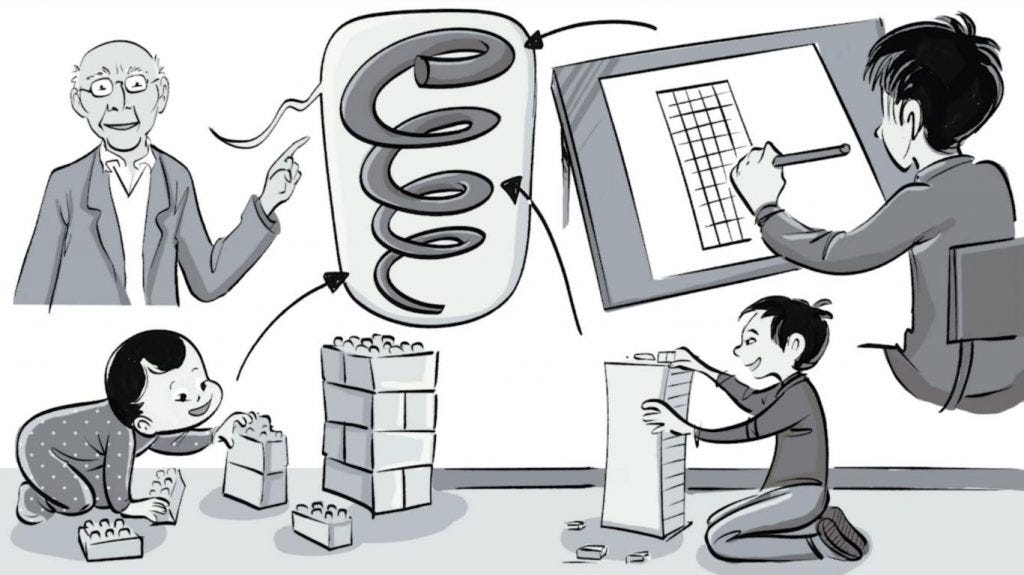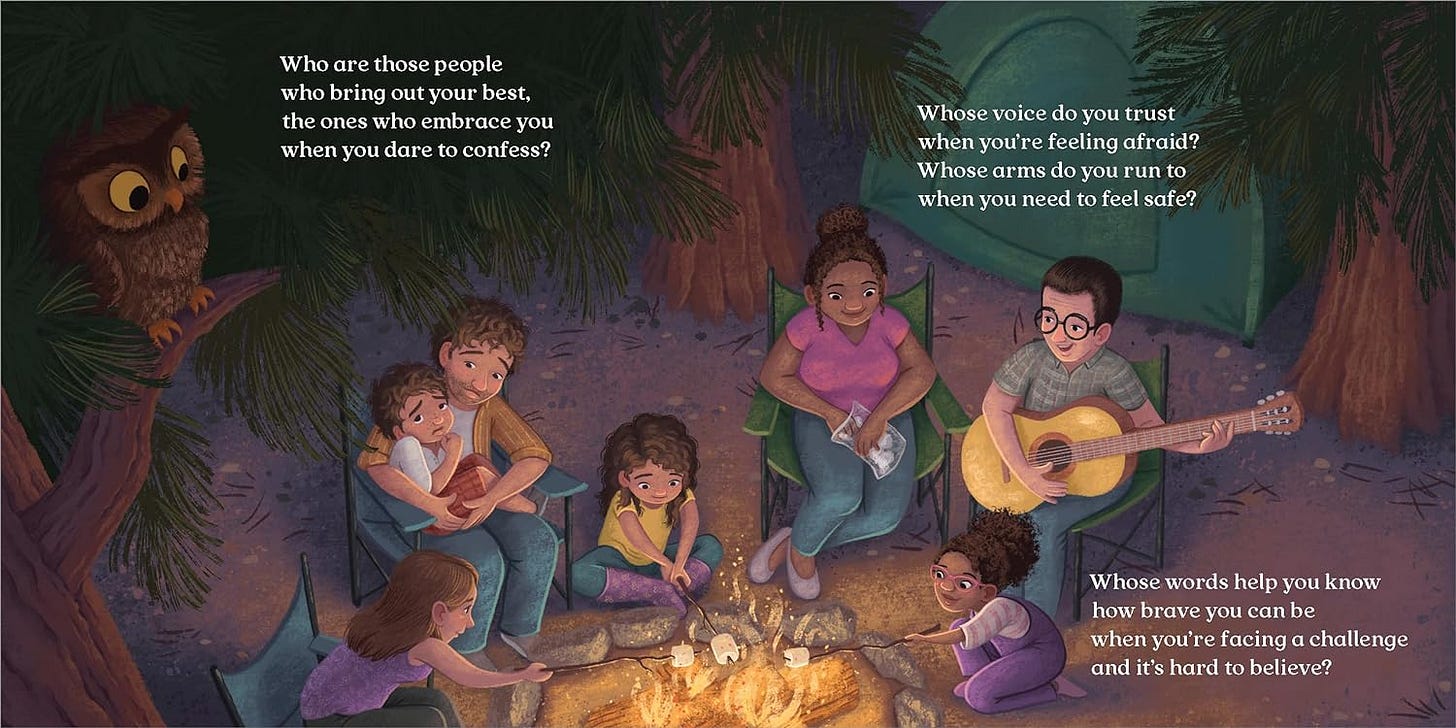Dear Friends,
What texts live inside you?
I use the word text loosely, in that scholarly sense where text actually means: book, TV show, movie, painting, song, meme…
While there’s no master list I can refer to, there are certainly lodestars. The TV shows House and Bones, Miss Congeniality, the Mark Strand poem “Keeping Things Whole,” the novel “Oranges Are Not the Only Fruit” by Jeanette Winterson, the music video for Mandy Moore’s “Candy.” And, of course, plenty of scripture and hymns.
And Godly Play stories, of course. I hear them everywhere.
So, when I look at the lectionary for the approaching Fifth Sunday in Lent, the layers appear:
“unless a grain of wheat falls into the earth and dies, it remains just a single grain”: oh, another story about planting, like so many Parables, but the question, so to speak, is not “What is the Kingdom of Heaven like?” or even “Who is my neighbor?” but more like, “How do we reach this Kingdom that is unlike any other Kingdom?”
“Sir, we wish to see Jesus.”: Who but Thomas will later ask to see Jesus? But see him, why? Because of the need for evidence. Later, when Jesus has risen, Thomas will come and fall to his knees upon seeing him – we’ll see this moment in Knowing Jesus in a New Way – with Thomas professing his belief. Here, a voice breaks through the moment, and the crowd seems to think it is blessing Jesus. But he tells them–
“This voice has come for your sake, not for mine.”: I read this and I hear Jesus telling Thomas, “Blessed are they who do not see, and yet believe.” Signs are a gift that bolster us, but they are not essential or the path to faith (the assurance of things hoped for, the evidence of things not seen). This one isn’t a Godly Play lesson, but it also is – it’s the voice that is also like a dove that appears at Jesus’s baptism, announcing to the witnesses, “This is my Beloved son, in whom I am well pleased.”
Still, where am I going with all this? It all leads me to this very last moment:
“…when I am lifted up from the earth, will draw all people to myself.” He said this to indicate the kind of death he was to die."
I read those lines and I am reminded of the final moments of the Baptism lesson itself, rather than the Baptism of Jesus:
“Eventually, the time came when the Light that was just in one place needed to change so that it could be in every place and every time…”
This isn’t the precise language, but it’s the slight variation that’s come to live inside of me and that comes to my lips as I think about telling this story, which I’ve actually scheduled for my program this coming Sunday.
You see, the seed falls to the earth and dies so that it can bear fruit. The Light of the World, which shown brightly in one moment, in one place, needed to transform, diffusing, spreading into everything. A simple thing changes to become something greater and more extraordinary.
Undoubtedly, many if not all of you reading this experience some version of this when encountering scripture. You don’t get this newsletter because you’ve thought about the Bible once or twice in passing. But that’s a peak into my cognitive avalanche.
The Time/This Time
Here is the thing about what lies ahead: Jesus is about to be crucified. Holy Week approaches. As we say:
Christ has died. Christ is risen. Christ will come again.
The great cycle that structures our faith means that we are approaching the first statement – soon, Christ will die.
And then, shortly thereafter, Christ will rise again.
And, as we profess, we await the day when he will come again in glory. But in the meantime, we will cycle through those first two, discovering something new and necessary each time. The time came – that one singular time – so that this time, the one we count by our clocks and calendars, can come again and again and again for us who needs signs and works and wonders that we might grasp even a fragment of the great story.
And, if it’s that difficult for us, wow are we supposed to talk about that story with children?
Truth. Tradition. Tools.
Or Scripture. Tradition. Reason.
Yes, that’s the standard Episcopal way, but as I was reading Meredith Miller’s recent post about how we talk about Easter with children, this was my overall impression. A few years ago, Miller posted a few key ways to talk about Easter that didn’t emphasize guilt and substitutionary atonement, but the Good News of Christ’s resurrection. That sounds like a no-brainer around here, but as she describes, there were people who were really upset about some of her choices. I’m sure none of us are surprised about that part, either. Whenever we communicate faith with love at the center, rather than sin and guilt, there will always be people who are upset about it.
Of course, part of the gap is that a lot of the sad and difficult death and sin things belong in Lent. It’s not that we don’t need to talk about them or that they’re not appropriate for children. It’s that those things aren’t the message of Easter. Easter is the Good News season more than any other.
So, now what? What combination of Truth, Tradition, and Tools will carry us through Holy Week and into Easter?
Break It Down: Depending on how old the children in your household or community are, there are appropriate ways to tell each part of the Holy Week story. The youngest just need the landmarks.
Jesus arrives in Jerusalem for the last time and it’s like a special parade.
Later in the week, Jesus and his friends share a meal together – it’s a little like a fancy dinner, but it’s also the beginning of what we know as Communion.
People are mad and Jesus is taken away – he says goodbye to his friends and he dies and is buried. Everyone is sad and goes away, but this is not the end.
Jesus will be back. On the third day, his friends discover that Jesus has come back. This is a great mystery, but it is also wonderful news. God has a special plan for Jesus and for us.Create Connections: Each of these key moments in Holy Week can be linked to something else that even very young children know something about.
When Jesus came riding into Jerusalem, people spread their coats and great big leaves on the ground, covering the dirt and shouted Hosanna. How would you greet Jesus? Who would you tell about what you saw?
Jesus and his friends shared a special meal. How would you set the table for this meal? Can you make place cards or placemats for this special meal? What foods would you serve?
Jesus and his friends said goodbye – for now, and his friends and even his mother went away because they were sad and and afraid. They kept each other company. Who do you spend time with when you have these feelings? They had to wait for three days for this new, exciting beginning. What do you think they did during that time? What do you do when you are having a hard time waiting?Let The Story Grow: Meredith Miller cites the idea of spiral learning, building on past exposures to the story to increase information and complexity. This is what we do in Godly Play, but it’s what we all do all the time, too. We are able to integrate new information only because we’ve built a simpler foundation.
The coolest thing about spiral learning? It never ends. There’s always something more to discover – and children often help us make those discoveries.Pick Your Problems: One of the things that can make teaching about Holy Week and Easter overwhelming as adults is that we know there are a lot of parts of the story that are fraught. Whether you’re grappling with your own relationship to substitutionary atonement or addressing the antisemitism that frequently pervades the Passion narrative, you’ll undoubtedly find fragments of these issues in children’s and youth resources. We have to address these things. We also have to build a foundation that makes addressing those issues meaningful. But when we get too caught up in these problems too soon, the core redemptive story gets lost.
A Pre-Easter Round-Up
If you don’t have the Illustrated Ministry coloring Palm in your material library yet, you can download it for free here. It’s been one of my seasonal essentials for several years now.
If you’ve ever used “Resurrection Eggs,” you may have appreciated how they tell the Holy Week & Easter story, but maybe something seemed amiss - a little too much pain and atonement. Traci Smith of the Faithful Families series has her own version that re-balances the story, with 4 eggs each for Jesus’s life, death, and resurrection. You can find her symbols here. Are you really crafty? I really like how the symbols look painted on stones.
Friend of the newsletter Glenys Nellist has a new book available for preorder based on Psalm 98: Song of the Seasons, and this one goes above and beyond with the bonus resources. While ZonderKids historically puts together gorgeous activity kits, this book is out from Paraclete and includes downloadable StoryWalk materials and even a five-day VBS or camp curriculum. I’ve got a copy in hand and the illustrations are also a delight.
Speaking of those book supplements, you can find all of the applicable activity packs for Glenys’s Lent and Easter books here.
We’ve been blessed with a new Matthew Paul Turner release, entitled “You Will Always Belong.” MPT’s books sing with affirmation of the goodness inside every child – and inside of each of us! (And fingers crossed I can get him to come visit the families if he’s back at Wild Goose this summer because our storytime offerings are one of my favorite things – and let me know if you’re thinking about hanging out at the Goose!)
There are lots of playlists out there for this season, but if you want to keep it simple, check out the back-to-back Page CXVI albums, Lent to Maundy Thursday and Good Friday to Easter. They’ve been around for a while, but they’re one of my go-to resources.
Peace to you as we approach the hustle and bustle of Holy Week. May you be present to the time that remains in Lent. We aren’t done with this holy time. Don’t let the work rush you through the reflection.
Peace,
Bird








This was a great one, Bird! So much to share out -- thank you!